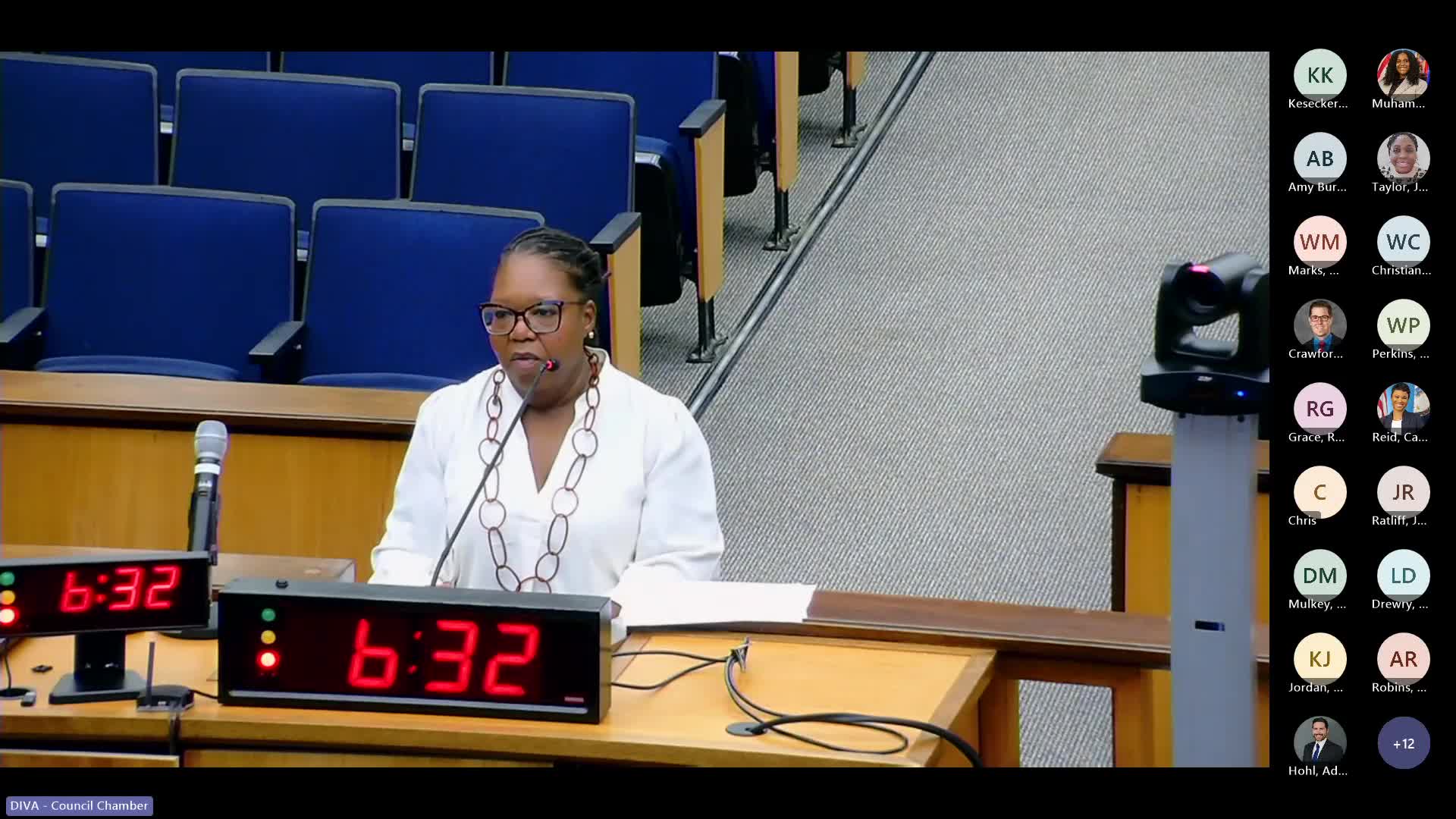Richmond's Diamond District Project Advances with $166M in Public Infrastructure Investments
September 17, 2025 | Richmond City (Independent City), Virginia
This article was created by AI summarizing key points discussed. AI makes mistakes, so for full details and context, please refer to the video of the full meeting. Please report any errors so we can fix them. Report an error »

In the heart of Richmond City Hall, the Finance & Economic Development Standing Committee convened on September 17, 2025, to discuss the ambitious Diamond District project, a transformative development poised to reshape the area surrounding the new stadium. As the meeting unfolded, city officials shared updates on the progress of infrastructure and mixed-use developments, painting a picture of a vibrant future for Richmond.
The committee highlighted significant milestones achieved this year, including the groundbreaking of infrastructure work that sets the stage for vertical development expected to commence in 2026. With a total investment of approximately $166 million across 20 acres, the project is a blend of public and private financing. Public funds will primarily support the stadium, roadways, and community amenities, while private investments will drive the mixed-use components, including retail, hotels, and affordable housing.
As of September 2025, over $130 million in stadium bonds have been issued, with more than $77 million already spent. The stadium construction is on track for substantial completion by February 2026, with visible progress marked by the recent steel topping out. A series of aerial photos showcased the transformation of the site, illustrating the clearing and preparation for future developments.
The infrastructure work, which includes new streets, pedestrian crossings, and utilities, is crucial for ensuring access to the stadium and facilitating the mixed-use development. The committee anticipates that this groundwork will be completed early next year, paving the way for further construction in 2026.
In addition to the stadium and infrastructure, the meeting addressed the importance of community amenities, including parks and solar energy initiatives. A new solar array featuring over 2,000 rooftop panels is set to generate enough power to service 250 local homes or businesses, with construction expected to begin in 2026.
The committee also discussed the participation of minority-owned businesses (MBEs) in the project, reporting that 26% of contracts awarded for the mixed-use phase have gone to MBEs, with 39% of spending directed to these businesses. However, the stadium development has seen lower participation rates, prompting a focus on improving these numbers in line with best practices identified in a recent disparity study.
As the meeting concluded, officials emphasized the importance of filling funding gaps for public infrastructure and advancing negotiations for the acquisition of the Sports Backers Stadium, which is critical for the project's timeline. With the promise of a revitalized Diamond District on the horizon, Richmond City is poised for a significant transformation that aims to enhance community engagement and economic development in the years to come.
The committee highlighted significant milestones achieved this year, including the groundbreaking of infrastructure work that sets the stage for vertical development expected to commence in 2026. With a total investment of approximately $166 million across 20 acres, the project is a blend of public and private financing. Public funds will primarily support the stadium, roadways, and community amenities, while private investments will drive the mixed-use components, including retail, hotels, and affordable housing.
As of September 2025, over $130 million in stadium bonds have been issued, with more than $77 million already spent. The stadium construction is on track for substantial completion by February 2026, with visible progress marked by the recent steel topping out. A series of aerial photos showcased the transformation of the site, illustrating the clearing and preparation for future developments.
The infrastructure work, which includes new streets, pedestrian crossings, and utilities, is crucial for ensuring access to the stadium and facilitating the mixed-use development. The committee anticipates that this groundwork will be completed early next year, paving the way for further construction in 2026.
In addition to the stadium and infrastructure, the meeting addressed the importance of community amenities, including parks and solar energy initiatives. A new solar array featuring over 2,000 rooftop panels is set to generate enough power to service 250 local homes or businesses, with construction expected to begin in 2026.
The committee also discussed the participation of minority-owned businesses (MBEs) in the project, reporting that 26% of contracts awarded for the mixed-use phase have gone to MBEs, with 39% of spending directed to these businesses. However, the stadium development has seen lower participation rates, prompting a focus on improving these numbers in line with best practices identified in a recent disparity study.
As the meeting concluded, officials emphasized the importance of filling funding gaps for public infrastructure and advancing negotiations for the acquisition of the Sports Backers Stadium, which is critical for the project's timeline. With the promise of a revitalized Diamond District on the horizon, Richmond City is poised for a significant transformation that aims to enhance community engagement and economic development in the years to come.
View full meeting
This article is based on a recent meeting—watch the full video and explore the complete transcript for deeper insights into the discussion.
View full meeting
